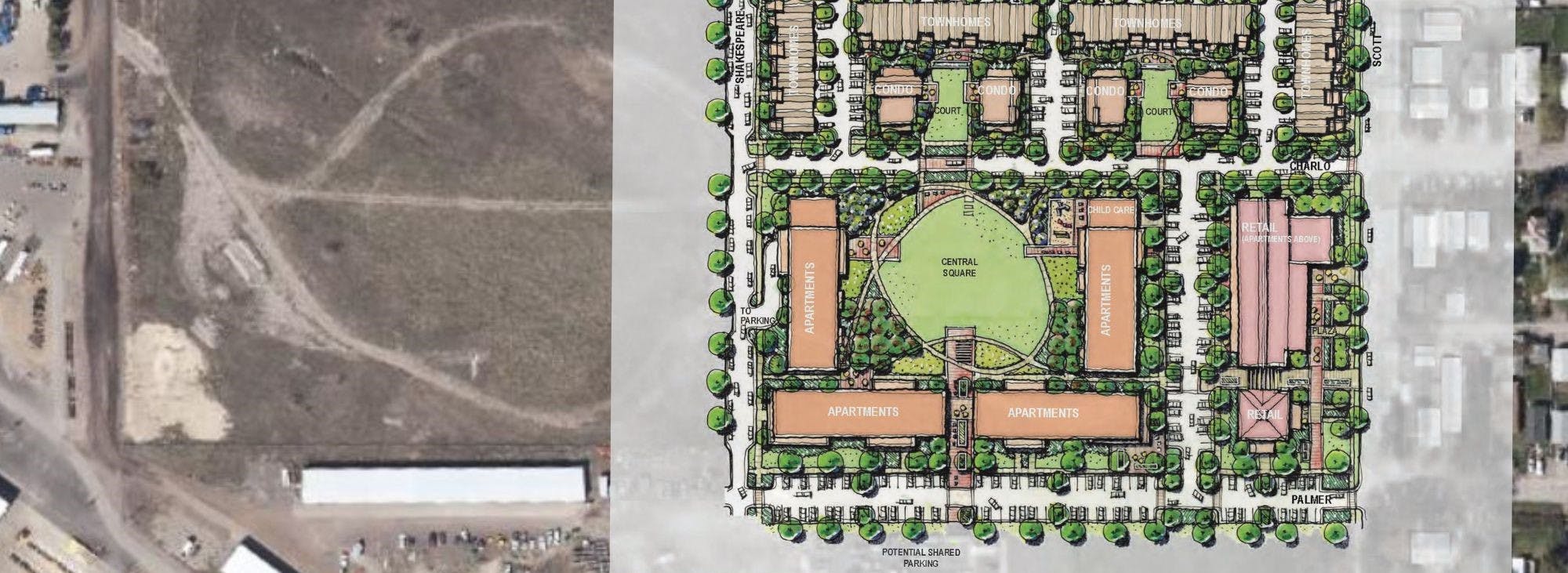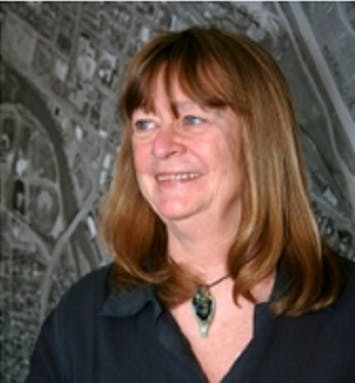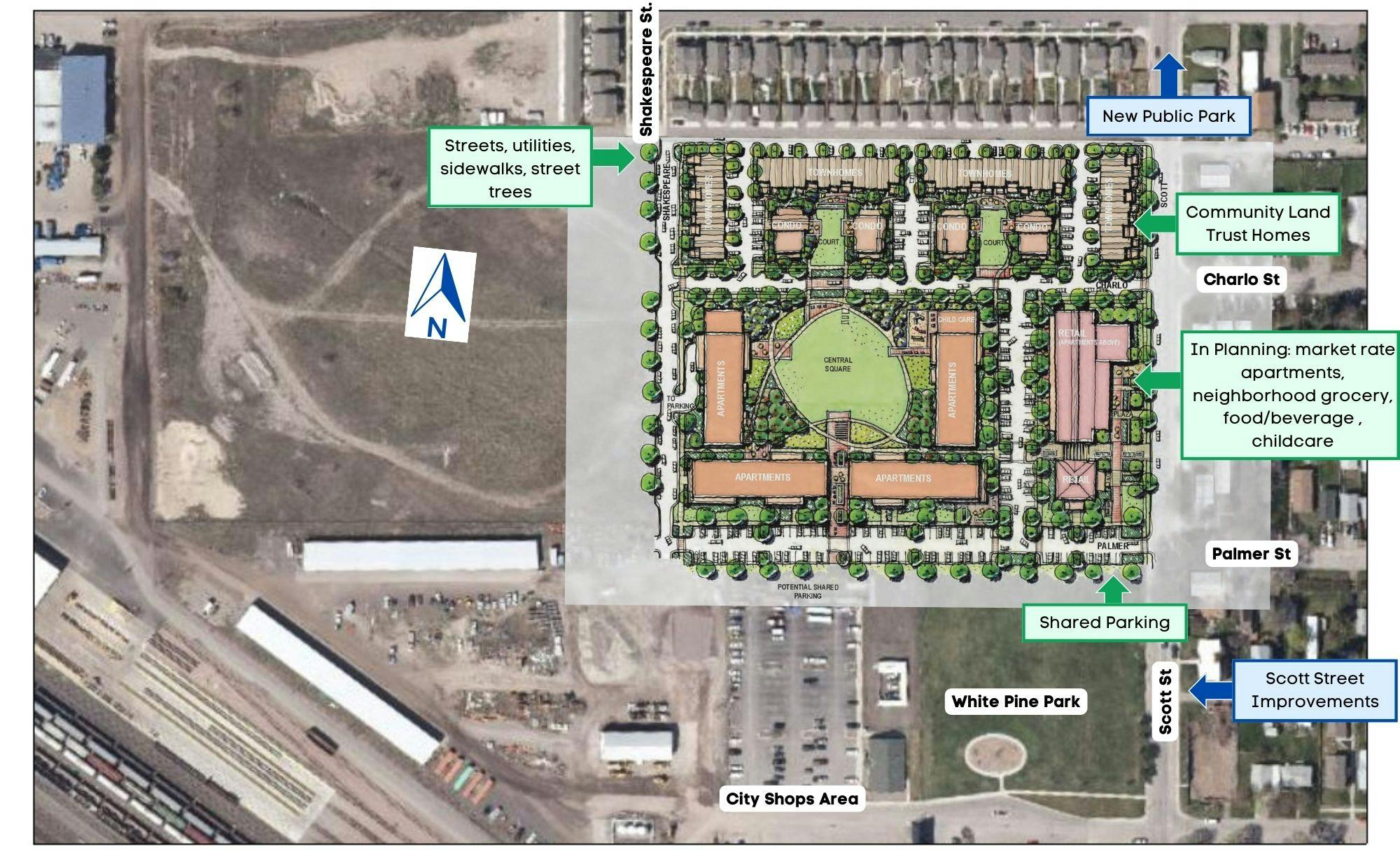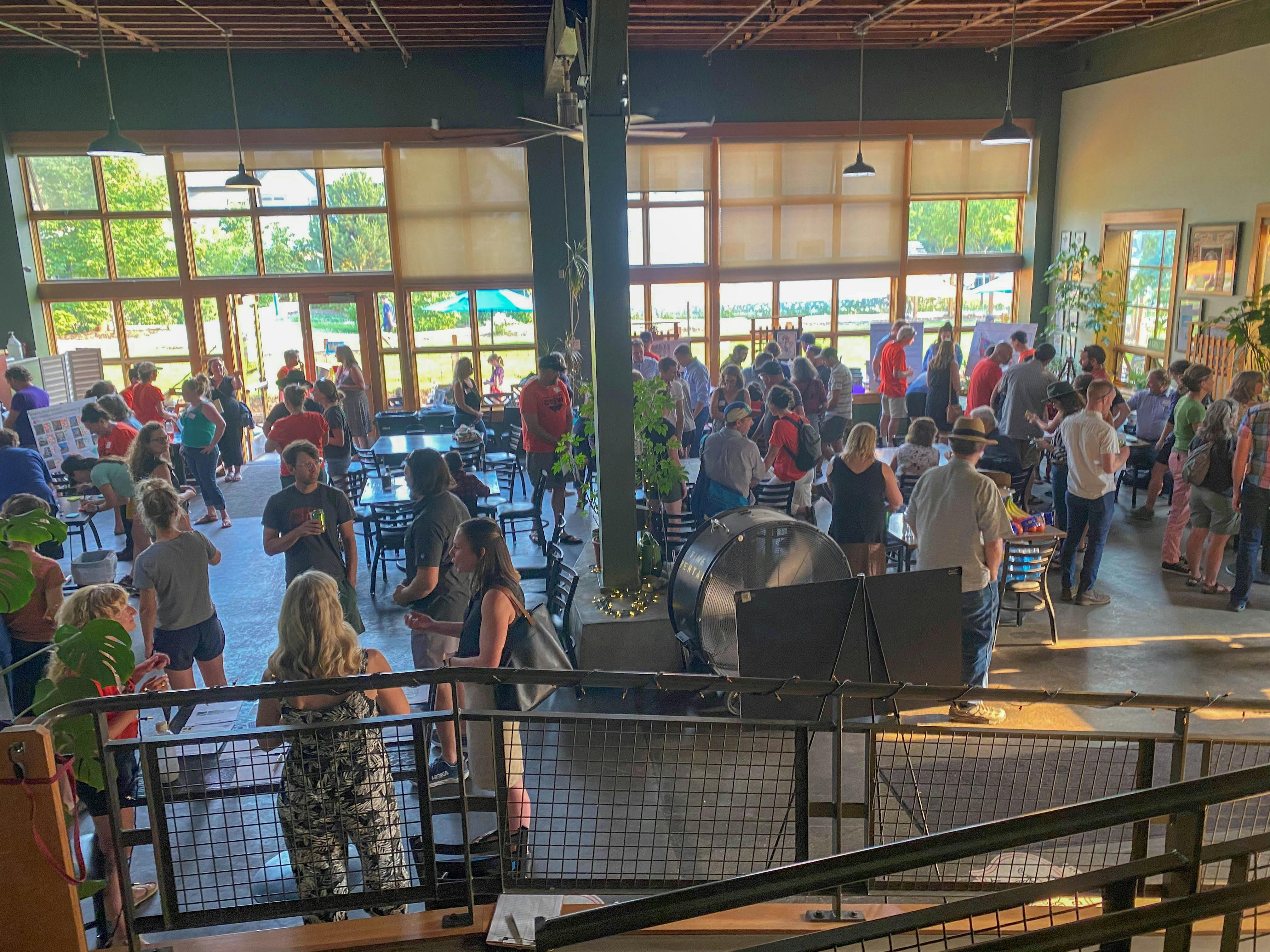Scott Street-Ravara Housing Development
Are you interested in future home ownership at the Scott Street-Ravara housing project? Reach out to Hannah Kosel at Front Step Community Land Trust, hannah@frontstepclt.org. Thank you! |
The Scott Street Ravara mixed-use, mixed-income development is planned on a portion of the former White Pine Sash facility in the Northside neighborhood.
The project includes 89 home ownership units on a 3-acre Community Land Trust. An estimated 53 percent of the home ownership units will be income restricted for households earning 120 percent of Area Median Income and below. The adjacent 5 acres is master planned for up to 220 housing units and an estimated 30,000 square feet of commercial space.
This project is a partnership among the City of Missoula, Ravara Development, LLC, an affiliate of Goodworks Development, LLC, City of Missoula Affordable Housing Trust Fund, Front Step Community Land Trust, Neighborworks Montana, First Security Bank, Montana Board of Investments, and the Missoula Redevelopment Agency.
What's Happening Now


Construction on the Scott St-Ravara housing project is advancing along Scott St in the Northside Neighborhood. Street paving is occurring now, in the spring of 2025. Construction of the first phase of Community Land Trust homes is expected to continue through summer of 2026, with the first townhomes expected to be completed by early 2026.
Thank you for your patience as construction activity to build new housing continues in your neighborhood!
What's Happening Next
- Sign up for updates on the project in the "Stay Informed" box.
- To learn about a new park on North Scott Street follow the Northside Parks project.
- For more information about purchasing the homes start with a quick screening form: https://tinyurl.com/4zxkemr5
or check out the website: https://www.frontstepclt.org/
Share your questions with the team!
Do you have a question about this project? Please let us know!












